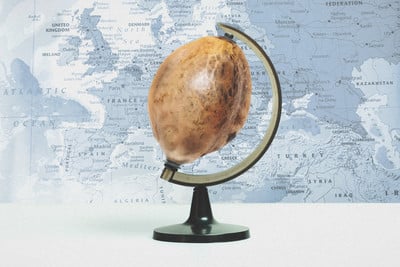.

European Drug Reports: Cannabis Use Statistics 2022
How many young adults use cannabis in Europe? How prevalent are dangerous synthetic cannabinoids? Do Europeans prefer flower or extracts? Find out the answer to these questions and many more. Using the latest data, we've broken down the most interesting findings into an easily digestible format for your reading pleasure.
The 2022 editions of the European Drug Report[1] and The European Cannabis Report (7th Edition)[2] provide fresh insights into the relationship between European populations and cannabis. Collectively, these data shine a light on key areas of the cannabis industry, including which products currently reign supreme. The figures also elucidate trends in personal cannabis use, including which gender uses cannabis most frequently and which health conditions users are most likely to address with the herb.
Contents:
Although in its infancy, the legal cannabis market in Europe continues to swell. But continent-wide restrictions mean the black market remains highly lucrative. Cannabis data from these reports detail the huge volume of marijuana and cash that moves through this illegal trade network.
We’ve combed through these reports and pulled out the most interesting weed statistics. Get ready to deepen your understanding of cannabis in modern Europe.
Drugs in Europe: New Insights Into Ancient Behaviours
Certain threads weave back from modernity into antiquity, linking us to our ancestors. No, we’re not talking about hunting, foraging, or forming communities. Instead, we’re referring to something less vital, but by no means insignificant: the ingestion of drugs.
Limited anthropological records provide hints as to how our predecessors used drugs. But the advent of today’s tech means we’re far more aware of who uses them, for what purposes, and the positive and negative consequences of such. Enter the European Drug Report, and the European Cannabis Report, both of which harness massive data sets to get ever closer to accurately portraying the cannabis habits of the people of this world.

European Drug Report 2022: Trends and Developments
The European Drug Report (EDR) focuses on the negatives of drug consumption. Using the most recent data from a range of routine and complementary sources, the architects of this report present statistics surrounding not just cannabis, but myriad drugs including amphetamines, cocaine, MDMA, heroin and other opioids, and new psychoactive substances.
In his preface to the publication, Alexis Goosdeel, the Director of the European Monitoring Center for Drugs and Drug Addiction (EMCDDA), sums up the trends with his three-word assessment of “Everywhere, Everything, Everyone”. Though this language sounds somewhat Orwellian, with a touch of drug war hysteria, many of the drugs involved in the report are known to cause more social harm than good.
Goosdeel states that, within the European Union, drug use fuels major problems such as homelessness, psychiatric disorders, and youth criminality. This most recent publication also points toward a black market rebound following COVID-19 restrictions as a phenomenon fuelling underground trafficking. So, what exactly did the report discover about cannabis trends in recent years?
1. Millions of EU Citizens Use Cannabis (Men More Than Women)
.jpg)
.jpg)
With a population of over 745 million, Europe ranks as the third-most-inhabited continent on Earth. But how many of those people use cannabis? According to the EDR, a staggering 48 million males and around 38 million females report using the herb at least once. However, these figures vary drastically between countries in the region.
Around 4.3% of adults in Malta report using cannabis at some point in their lives, compared to 44.8% of adults in France. Wastewater collection samples reflect the widespread use of cannabis throughout Europe, and an increase in this trend. In 2021, out of 31 European cities with comparable data, 13 reported an annual increase in the THC metabolite THC-COOH.
💡 What Does This Mean?
Ultimately, these findings display the failure of the war on drugs. Despite threats of fines and imprisonment, large swathes of the population continue to use weed, and many are prosecuted for possessing and cultivating a drug that poses far less danger to the population[3] than legal substances such as nicotine and alcohol.
2. The Prevalence of Cannabis Use Among Young Adults
Among EU inhabitants as a whole, estimates suggest that 15.5% of citizens aged 15–34 used cannabis within the last year. Additionally, around 19.1% (9 million) citizens aged 19–24 used the substance within the last year, and 10.4% (4.9 million) within the same age range used the herb within the last month of data processing. But which European countries see the most use among young adults? The rankings below demonstrate reported marijuana use by country within the last year among citizens aged 15–34:
.jpg)
.jpg)
|
• Czechia: 22.9% • France: 21.8% • Italy: 20.9% • Croatia: 20.3% • Spain: 19.1% • Netherlands: 17.4% • Estonia: 16.6% • Finland: 15.5% |
• Ireland: 13.8% • Belgium: 13.6% • Slovenia: 12.6% • Denmark: 12% • Austria: 11.1% • Norway: 10.1% |
• Latvia: 8.2% • Cypress: 8.1% • Portugal: 8% • Poland: 7.8% • Slovakia: 7.7% • Sweden: 7.6% • Lithuania: 6% • Romania: 6% • Bulgaria: 5.9% • Greece: 4.5% • Hungary: 3.4% |
|
• Czechia: 22.9% • France: 21.8% • Italy: 20.9% • Croatia: 20.3% • Spain: 19.1% • Netherlands: 17.4% • Estonia: 16.6% • Finland: 15.5% • Ireland: 13.8% • Belgium: 13.6% • Slovenia: 12.6% • Denmark: 12% |
• Austria: 11.1% • Norway: 10.1% • Latvia: 8.2% • Cypress: 8.1% • Portugal: 8% • Poland: 7.8% • Slovakia: 7.7% • Sweden: 7.6% • Lithuania: 6% • Romania: 6% • Bulgaria: 5.9% • Greece: 4.5% • Hungary: 3.4% |
💡 What Does This Mean?
Cannabis use remains relatively high among the younger population in Europe, particularly in the west of the continent. Limited evidence suggests that those who use cannabis may consume less alcohol[4]. However, it also presents risks such as cannabis use disorder (CUD) and the aggravation of mental health disorders.
3. Cannabis Policy in Europe Is Becoming More Confusing
Although cannabis is somewhat politically and economically homogenised under the European Union, many member states continue to go their own way when it comes to weed policy. In December 2021, Malta legalized the cultivation of cannabis in private homes as well as non-profit communal growing clubs. Luxembourg also has home growing legislation in the works, and Germany and Switzerland (a non-EU state) are mulling over the possibility of a recreational market.
Many EU member states also have a medical cannabis programme of some kind. Some countries, while they permit medical cannabis, including the ex-EU state of the United Kingdom, maintain draconian laws over possession and home cultivation. Several counties within Europe also allow the domestic production of medical cannabis or are aiming to soon. These nations fall into three categories based on their progress in this area:
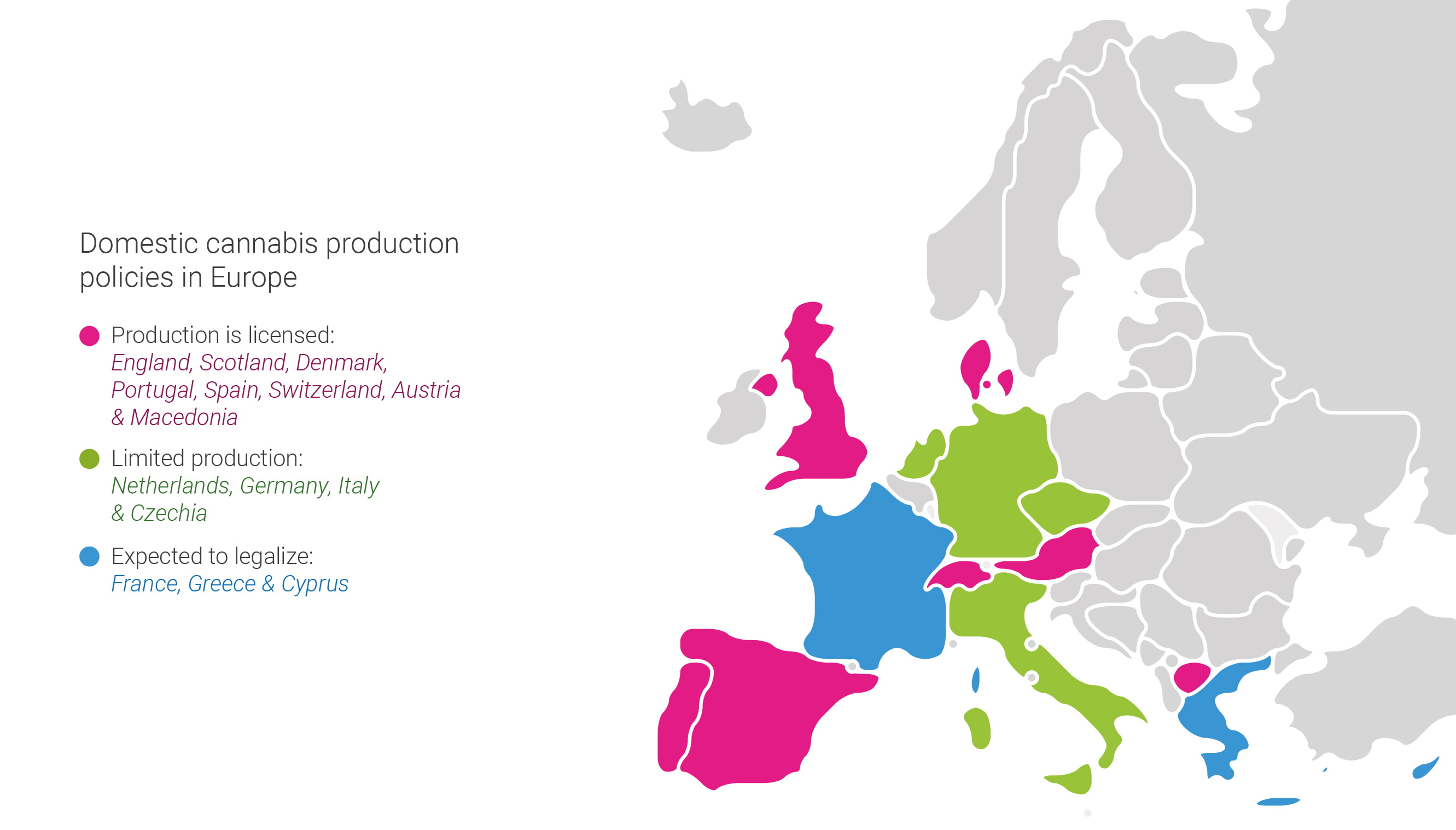
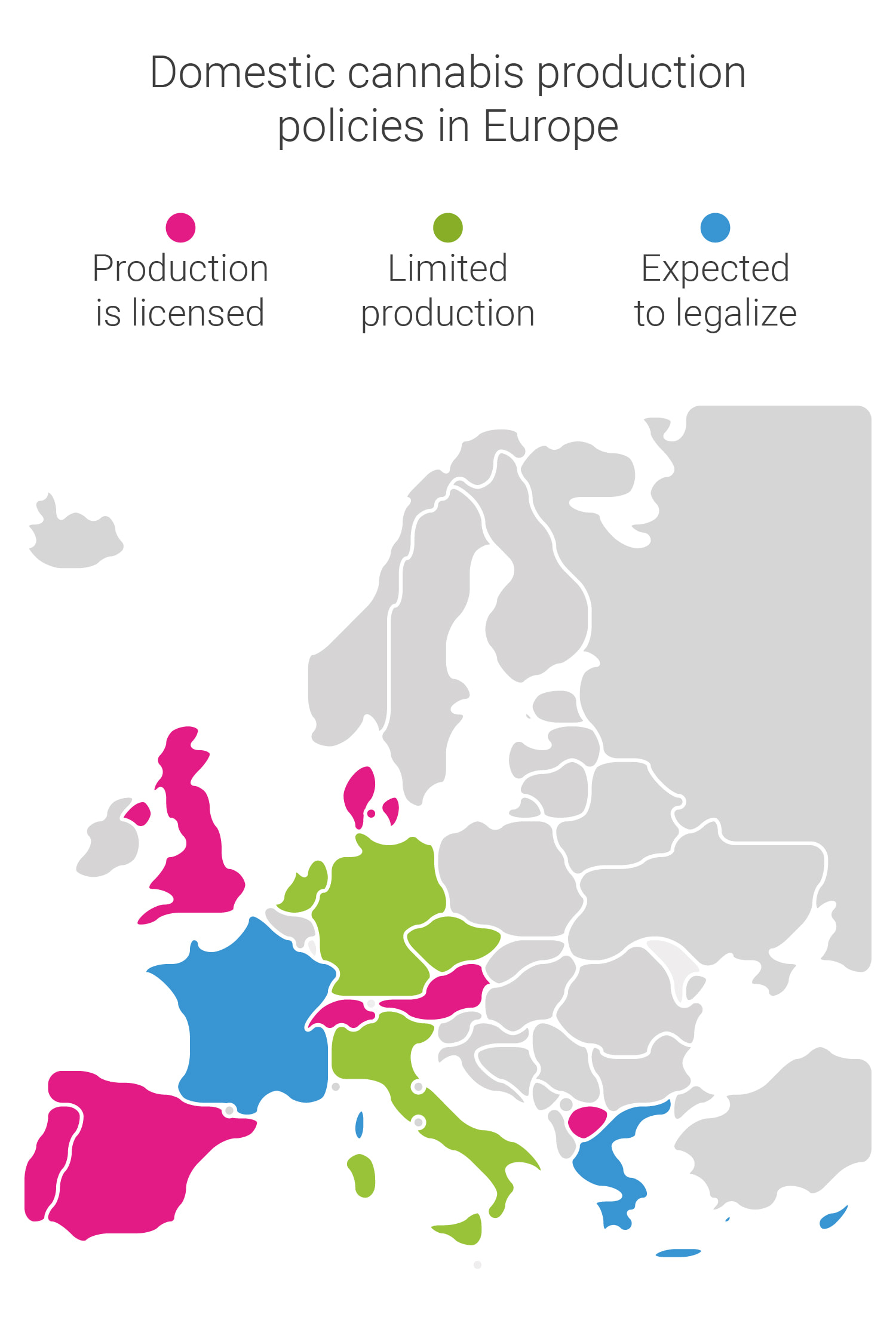
💡 What Does This Mean?
These differing approaches expose the dichotomy between science and ideology. Institutions tasked with overseeing public health claim to follow the science, but whether that is true or not is up for debate.
Those countries that uphold criminalising cannabis supposedly do so in an attempt to shield public mental and physical health, and prosecute those caught growing and using it. In contrast, other countries have laid down more lax legislation that has minimised incarceration and bolstered sectors of the economy. But which approach will have more lasting benefits? In these early stages, only time will tell.
4. Synthetic Cannabinoids: A Increasing Cause for Concern

.jpg)
Synthetic cannabinoids are man-made compounds that mimic the action of THC, the principal psychoactive component of cannabis. However, these molecules are known to activate cannabinoid receptors far more dramatically, thereby producing stronger outcomes and more severe side effects, including anxiety, paranoia, suicidal thoughts, nausea and vomiting, and organ damage.
While cannabis users in Europe don’t always specifically seek out synthetic cannabinoids, the EDR reports that eight EU member states have found samples of cannabis adulterated with these compounds. The extent of contaminated products remains unknown. The report suggests that criminal organizations are using industrial hemp flowers, which are cheaper and, in some instances, legal to produce, and lacing them with synthetic cannabinoids to deceive customers for profit.
💡 What Does This Mean?
The thriving black market in Europe, in part fueled by prohibition, poses a long list of dangers to consumers, including exposing them to products contaminated with synthetic cannabinoids and pesticides—some of which can be lethal. At this moment in time, the sheer scale of the issue remains unknown.
5. In Europe, Flower Reigns Supreme
.jpg)
.jpg)
The EDR displays data from the 2021 EU Web Survey that shows Europeans opt for flowers, or buds, as their main form of cannabis. Out of the respondents, 95% reported using herbal cannabis in the last month, compared to 32% who used resin, 25% who used edibles, and 17% who used extracts.
However, the potency of herbal cannabis appears relatively low. The average THC content of European flowers clocks in at 11%, compared to the 21% average in resin. These figures rank below the average potencies[5] of 19% in medical cannabis and 21% in recreational cannabis in the United States.
💡 What Does This Mean?
Recreational cannabis remains illegal in the majority of European countries. Considering this, most consumers are likely settling for the best they can acquire. Cultivators risk their personal freedom when growing cannabis to sell, and going to the extent of further processing the material just comes with more risks. The lack of regulation within the legal market also contributes to products that are poorer in quality and potency than those available in legal countries.
6. More People Are Seeking Care Following Cannabis Consumption

.jpg)
The most ardent advocates of cannabis often fall into a trap of reflexively claiming things like “cannabis isn’t addictive”, “cannabis never killed anybody”, and “cannabis can do no harm, only good”.
While the dangers of cannabis pale in comparison to those of other widely used substances, particularly alcohol, the plant comes with risks. Most noticeable among these include cannabis use disorder (CUD) and an earlier onset[6] of certain mental health conditions. The EDR reports that, in 2020, 80,000 citizens in Europe entered drug treatment for cannabis, 43,000 of these for the first time. Among this population, individuals tried cannabis for the first time at the average age of 16. The month before entering treatment, 46% of these individuals used cannabis daily, and 21% used the herb 2–6 times each week.
💡 What Does This Mean?
Although not particularly harmful compared to other recreational drugs, cannabis isn’t harmless. Tens of thousands of users experience trouble after using cannabis to the degree that they seek out care. Unfortunately, prohibition breeds stigma, and stigma aims to push away and estrange. This environment leads to poor understanding when it comes to public health, including among adolescents with unrestricted access to the herb.

The European Cannabis Report: Marijuana Industry Data
While the EDR seeks to identify trends in consumption, trafficking, and problems associated with cannabis, The European Cannabis Report looks at cannabis from a different perspective. The publication displays the latest information on the development of the emerging legal cannabis market in Europe. Prohibition Partners, a trusted provider of data within the international cannabis industry, performed the bulk of the data collection efforts. So, what can this report teach us about cannabis in Europe?
1. Dutch Medical Cannabis Flower Export Is at an All-Time High
The Dutch are known all across the planet, at least in cannabis circles, for their coffeeshops. These establishments operate in a legal gray area and serve up huge quantities of bud to tourists each year. However, the country also produces and exports a lot of medicinal cannabis. In fact, producers in the country have almost doubled their exports since 2018. The trend looks like this:
_1.jpg)
_1.jpg)
|
• 2010: 670.2 oz • 2011: 1410.9 oz • 2012: 1693.1 oz • 2013: 2645.5 oz • 2014: 9911.8 oz • 2015: 13051.1 oz • 2016: 16966.5 oz |
• 2017: 1,1587.3 oz • 2018: 2,1798.9 oz • 2019: 3,19365.1 oz • 2020: 3,13403.9 oz • 2021: 3,24691.4 oz |
2. German Pharmacies Are Expanding Their Strain Ranges
German pharmacies are expanding their strain options, a sign of healthy competition within the industry. The amount of choice that customers have in this setting has tripled since 2018. The development in this short period looks like this:
.jpg)
.jpg)
3. Medical Cannabis Patients Are Older Than You Might Expect
Younger people are more likely to use cannabis recreationally for a variety of reasons, including cultural influence and ease of access. However, medical cannabis patients are usually older. This might come as a surprise, but it makes sense when you consider medical users typically use cannabis for age-related conditions. Below is the average age of medical cannabis users in several European countries:
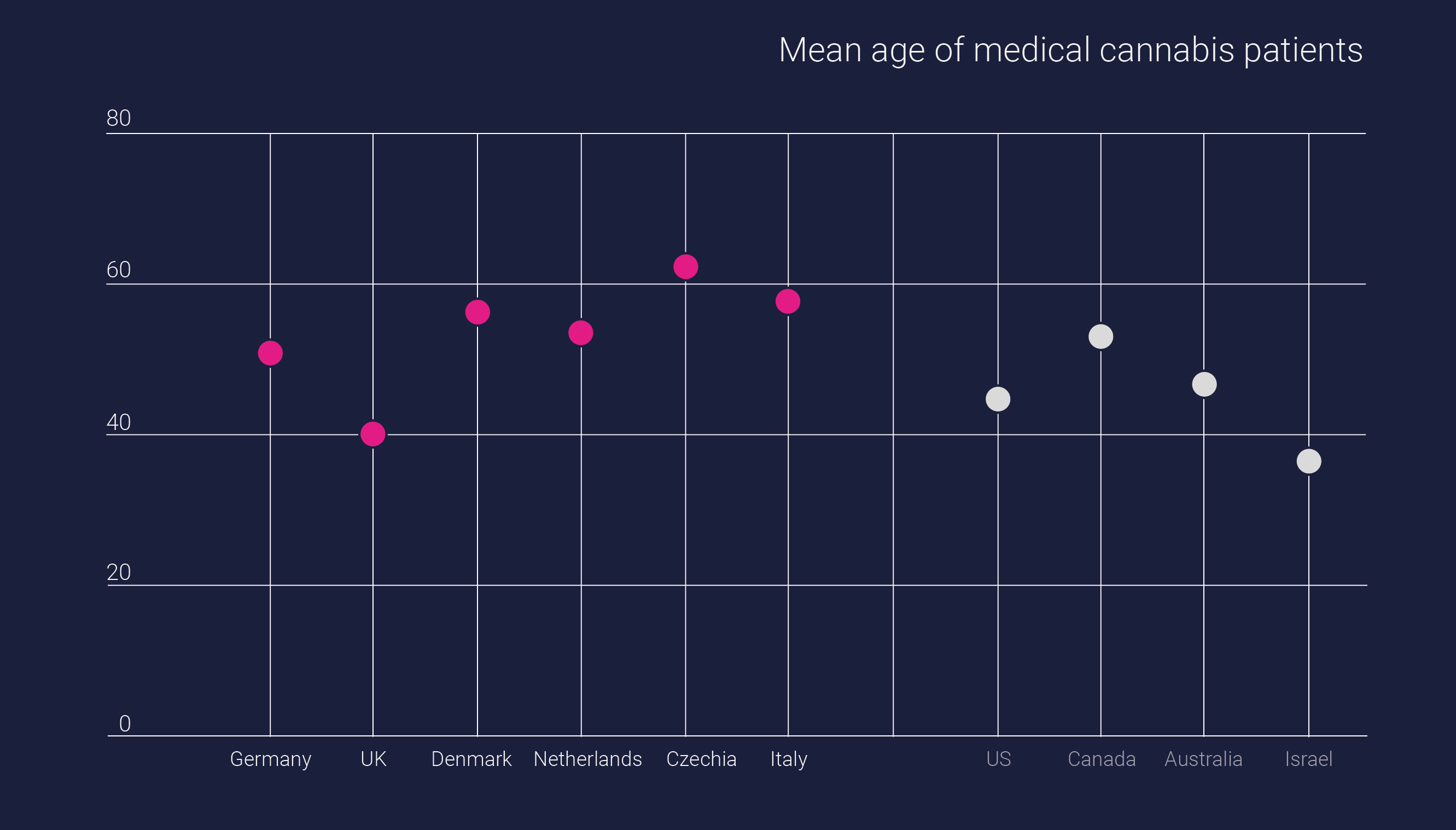
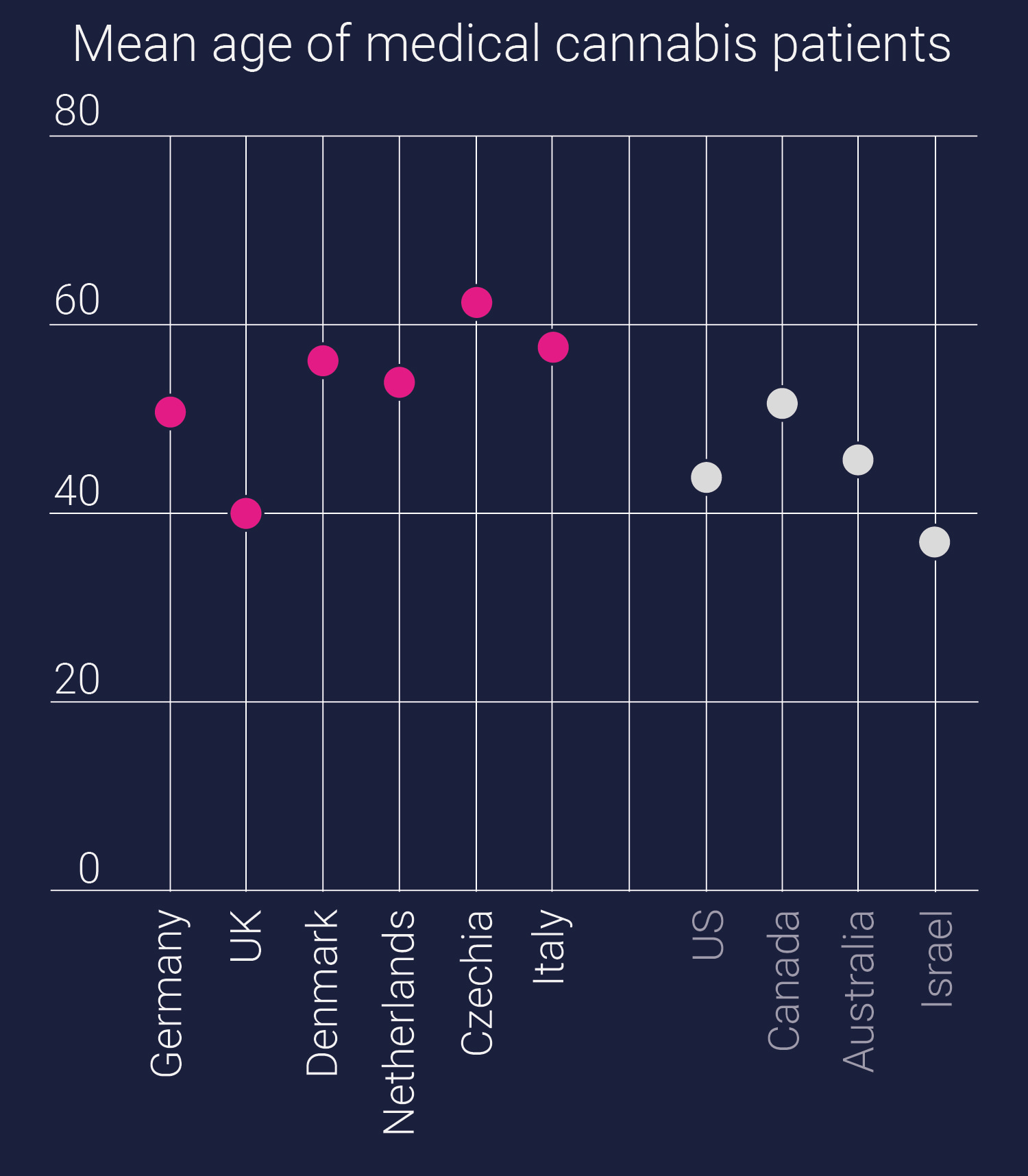
• Germany: 54
• UK: 40
• Denmark: 56
• Netherlands: 54
• Czechia: 62
• Italy: 58
4. Most Medical Patients Use Cannabis for Pain
Medical patients across Europe use the herb in an attempt to alleviate numerous health conditions, including seizures, anorexia, cancer/chemotherapy side effects, PTSD, anxiety, and spasticity. However, pain remains the most common reason for patients to turn to cannabis. Below represents the percentage of medical cannabis users in four countries that use cannabis to alleviate pain:
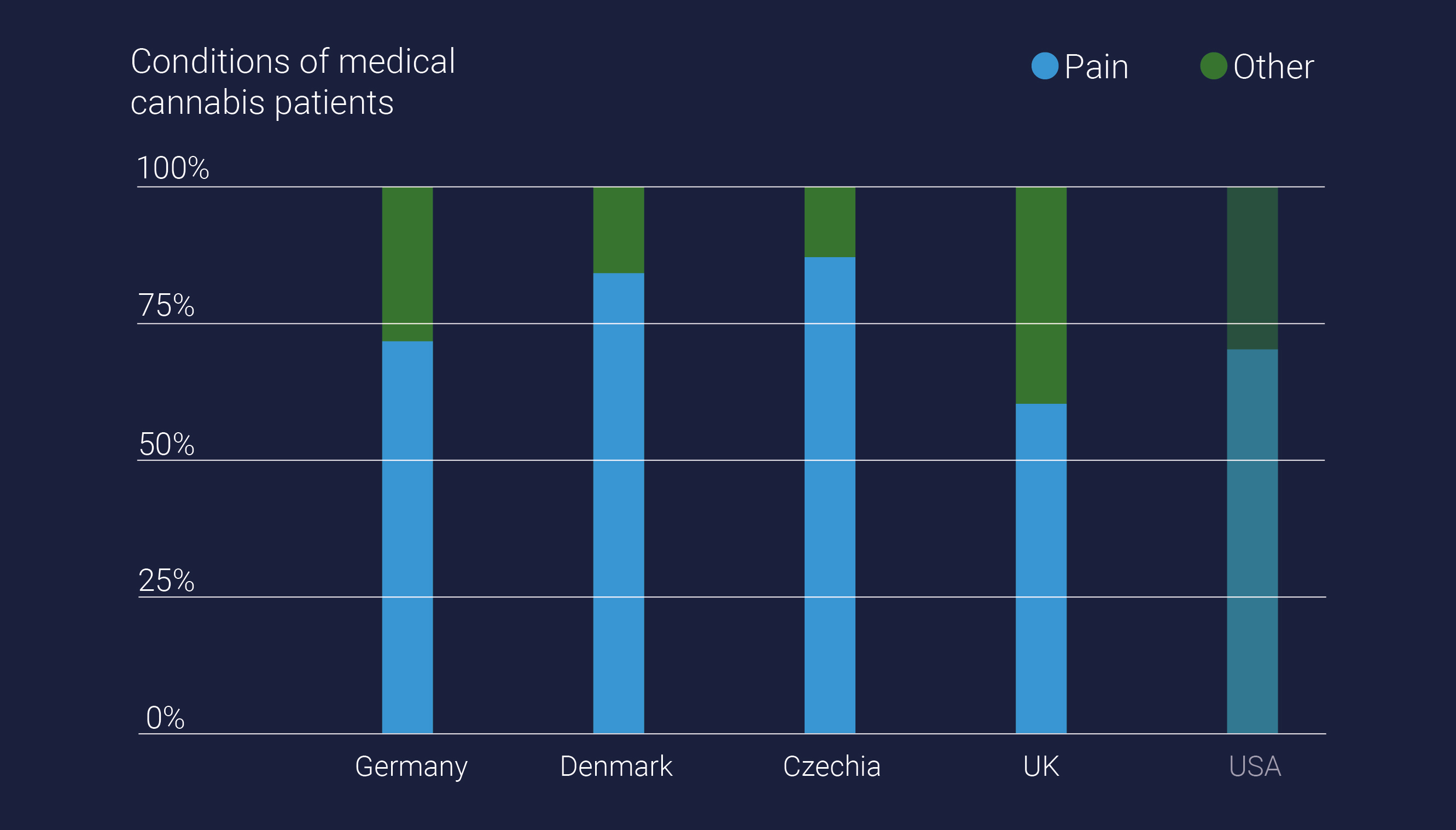
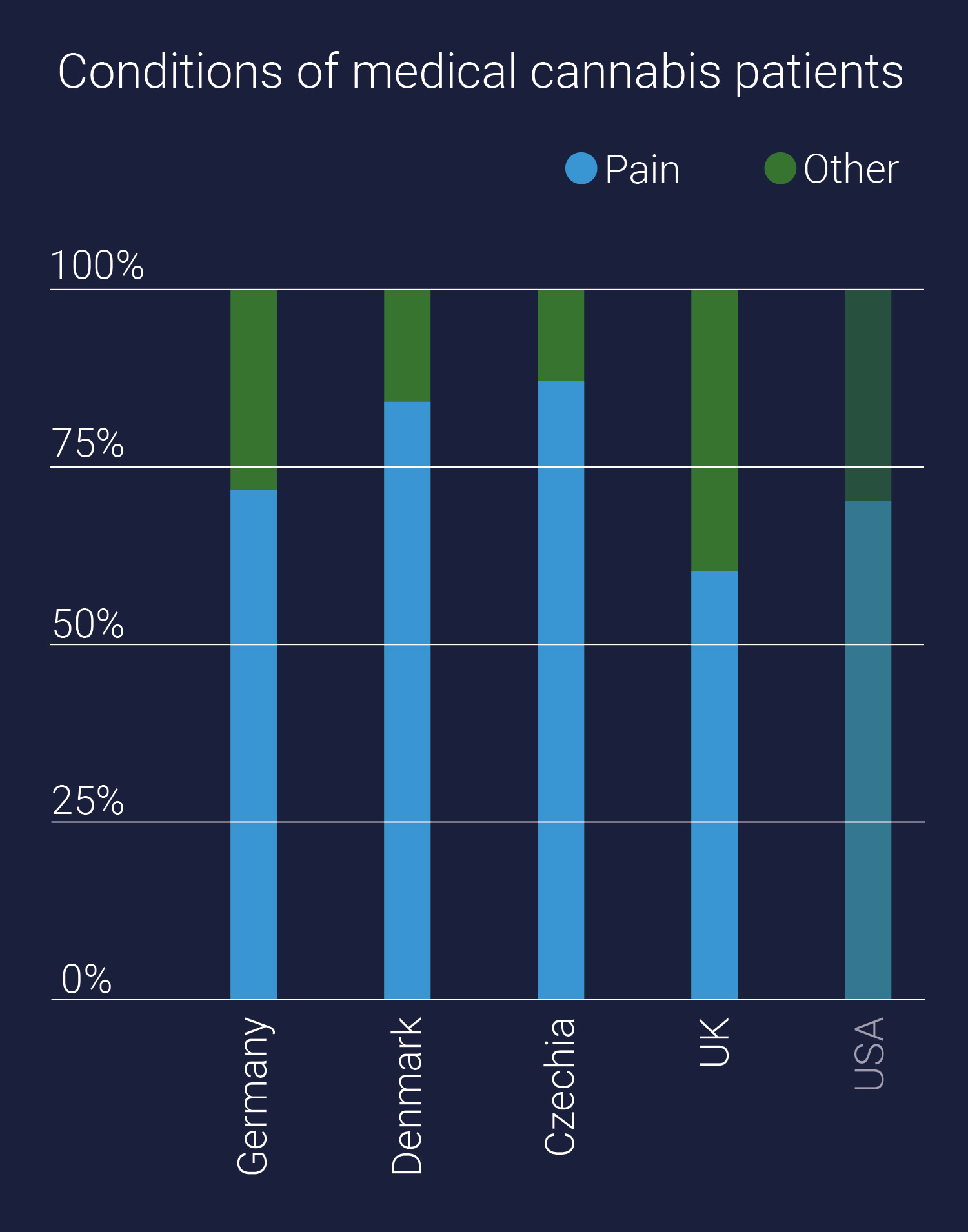
• Germany: 73% of patients
• Denmark: 85% of patients
• Czechia: 88% of patients
• UK: 61% of patients
5. Most Medical Cannabis Patients Are Men
In Europe, men are more likely to use the herb, but that doesn’t apply across the board. In some countries, women are significantly more likely to blaze up. Cannabis use patterns across men and women look like this:
.jpg)
.jpg)
6. Cannabis Flowers Dominate the European Market
Much like in the black market, cannabis flowers also dominate the legal market in the majority of European countries. However, they only make up a slither of cannabis sales in select countries:
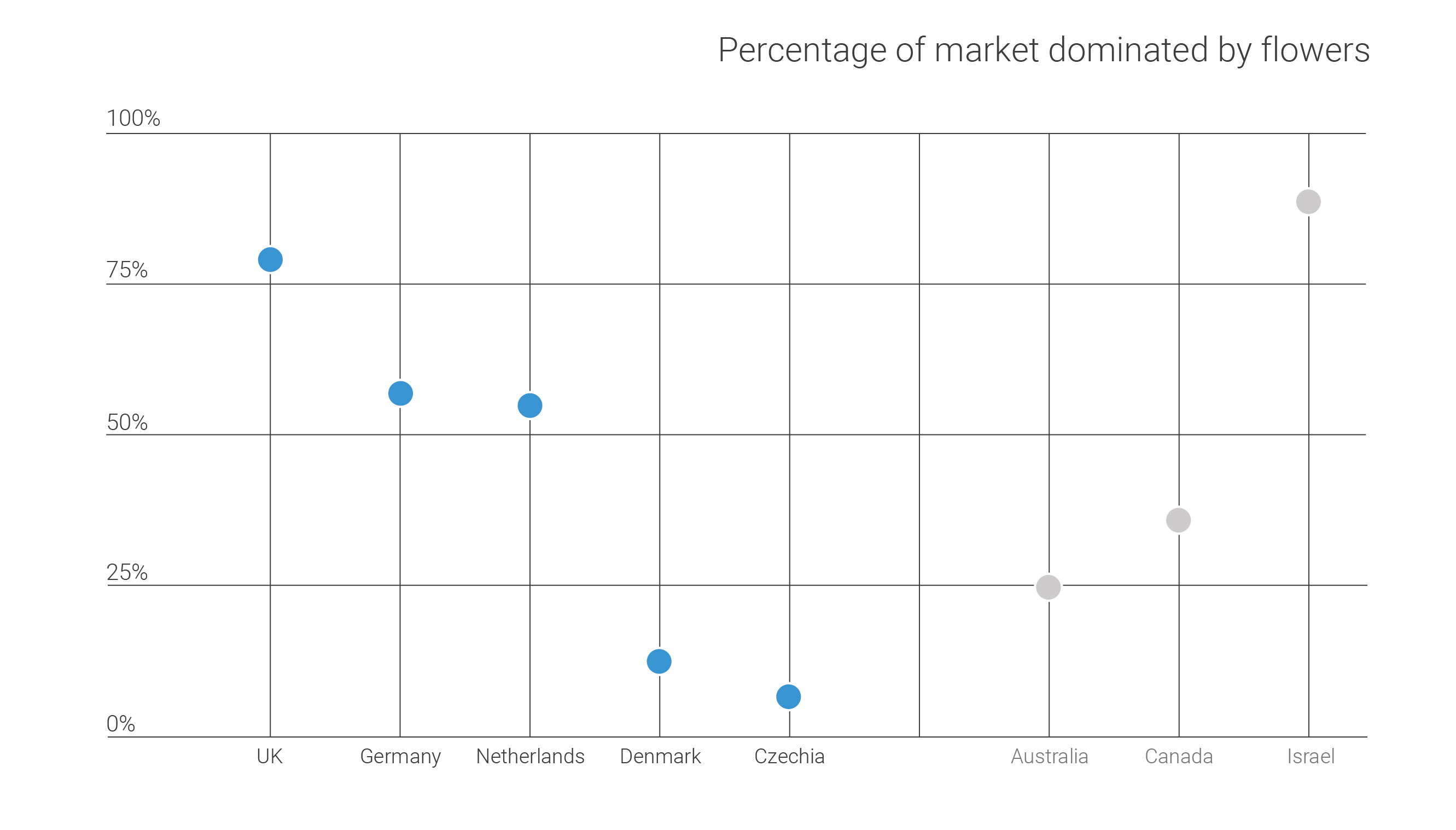
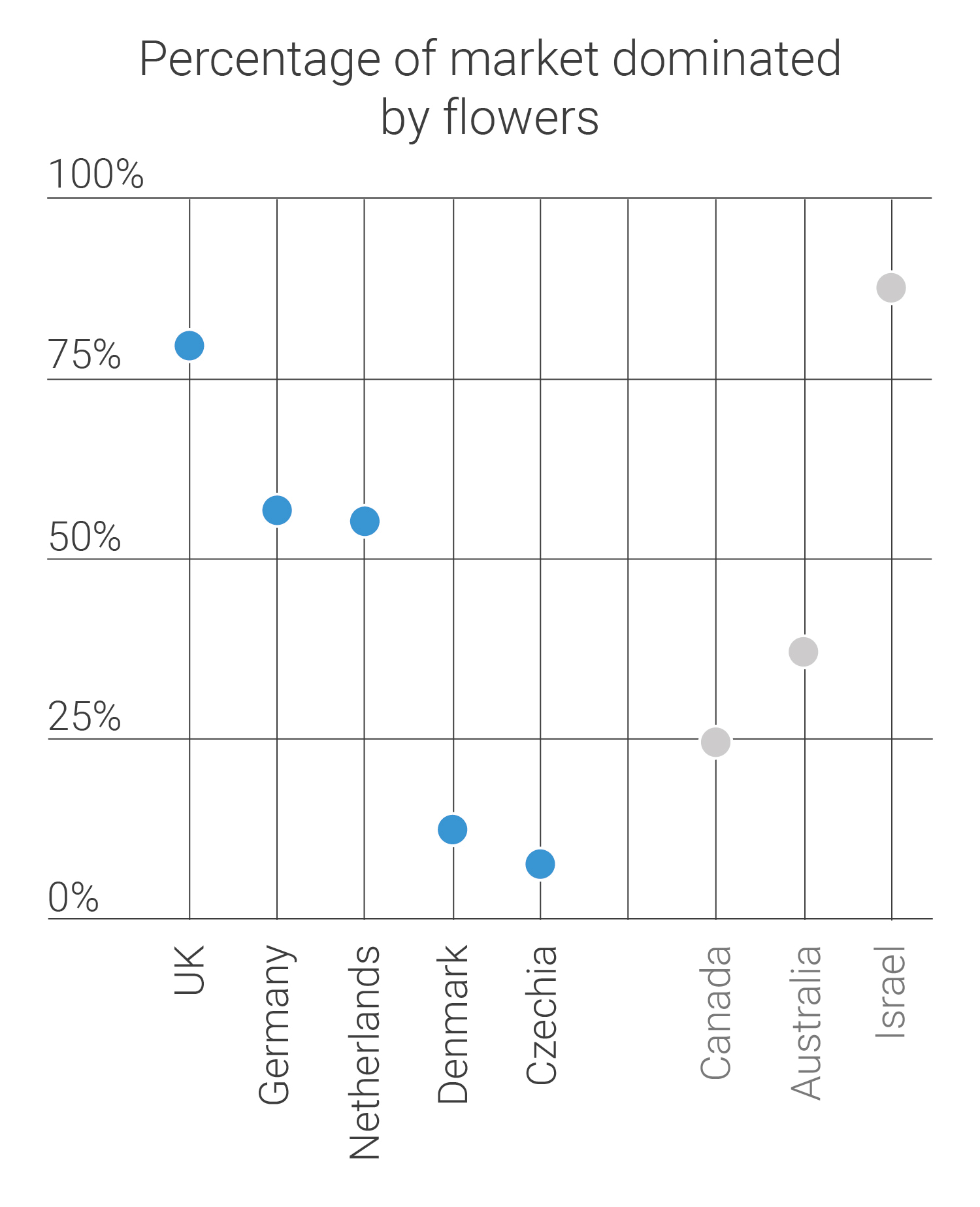
• UK (prescription): 78%
• Germany (value of publicly insured sales): 55%
• Netherlands (prescription): 54%
• Denmark (value of sales): 15%
• Czechia (prescription): 13%

Cannabis in Europe: A Look at the Bigger Picture
We’ve just taken you high above Europe, to a vantage point that transcends the unique cannabis ecosystems of each country. The data above, extracted from two recent reports, paints an interesting picture of cannabis use on the continent. But what have we learned, exactly?
We know that widespread criminalisation continues to fuel a gigantic black market, and that flower reigns supreme in these trade networks. We also know that more people are seeking help after using cannabis at some point within the last year.
We also have some valuable insights into the legal side of the herb in Europe, particularly through a medical lens. So far, men are largely using more cannabis than women, older members of the population are more likely to use medical cannabis, and flowers make up the bulk of sales in this sphere of the market as well.
The future of cannabis in Europe is hard to predict. However, key member states of the EU are making significant strides toward recreational weed legalization—a decision that could have a major positive economic and social impact.
- https://www.emcdda.europa.eu/system/files/publications/14644/EDR202218-ONLINE.pdf
- The European Cannabis Report: 7th Edition | Reports | Prohibition Partners https://prohibitionpartners.com
- Comparative risk assessment of alcohol, tobacco, cannabis and other illicit drugs using the margin of exposure approach - PMC https://www.ncbi.nlm.nih.gov
- Cannabis As Harm Reduction? Study Shows Patients Who Use It Drink Less Alcohol https://www.forbes.com
- Mapping cannabis potency in medical and recreational programs in the United States - PMC https://www.ncbi.nlm.nih.gov
- Cannabis and Mental Illness: A Review - PMC https://www.ncbi.nlm.nih.gov




























